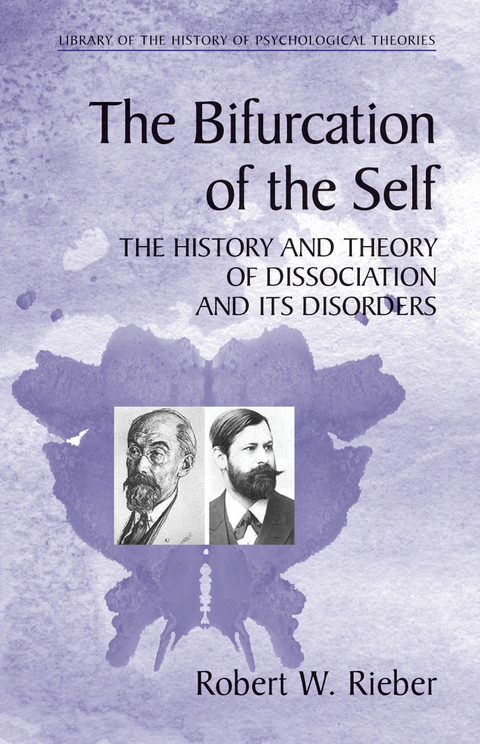
The Bifurcation of the Self
The History and Theory of Dissociation and Its Disorders
Seiten
2006
Springer-Verlag New York Inc.
978-0-387-27413-3 (ISBN)
Springer-Verlag New York Inc.
978-0-387-27413-3 (ISBN)
This book uses case history methodology to illustrate the relationship between theory and practice of the study of Dissociation Identity Disorder (DID). The book traces the clinical and social history of dissociation in a provocative examination of this phenomenon.
For more than a hundred years, dissociative states, sometimes referred to as multiple personality disorder, have fascinated the public as well as scientists. The precise nature of this disorder is a controversial one, dividing clinicians, theorists, and researchers. Challenging the conventional wisdom on all sides, Robert Rieber’s Bifurcation of the Self traces the clinical and social history of dissociation in a provocative examination of this widely debated phenomenon.
At the core of this history is a trio of related evolutions—hypnosis, concepts of identity, and dissociation—beginning with nineteenth-century "hysterics" and culminating in the modern boom in Dissociative Identity Disorder (DID) diagnoses and the parallel rise in childhood abuse/repressed memory cases. Rieber does not argue the non-existence of DID; rather he asserts that it is a rare disorder exaggerated by dissociation advocates and exploited by the media. In doing so, he takes on some of the most difficult questions in the field:
- How crucial is memory to a person’s identity?
- Can two or more autonomous personalities actually exist in the same body?
- If trauma causes dissociation, why aren’t there more DID cases?
- Why are DID cases prevalent in some eras but not in others?
- Does dissociative disorder belong in the DSM?
The book is rigorously illustrated with two centuries’ worth of famous cases including Christine Beauchamp, Ansel Bourne, Eve Black/Eve White, and most notably the woman known as "Sybil", whose story is covered in depth with newly revealed manuscripts. And Rieber reviews the current state of DID-related controversy, from the professionals who feel that the condition is underreported to those who consider it a form of malingering, so that readers may draw their own conclusions.
For more than a hundred years, dissociative states, sometimes referred to as multiple personality disorder, have fascinated the public as well as scientists. The precise nature of this disorder is a controversial one, dividing clinicians, theorists, and researchers. Challenging the conventional wisdom on all sides, Robert Rieber’s Bifurcation of the Self traces the clinical and social history of dissociation in a provocative examination of this widely debated phenomenon.
At the core of this history is a trio of related evolutions—hypnosis, concepts of identity, and dissociation—beginning with nineteenth-century "hysterics" and culminating in the modern boom in Dissociative Identity Disorder (DID) diagnoses and the parallel rise in childhood abuse/repressed memory cases. Rieber does not argue the non-existence of DID; rather he asserts that it is a rare disorder exaggerated by dissociation advocates and exploited by the media. In doing so, he takes on some of the most difficult questions in the field:
- How crucial is memory to a person’s identity?
- Can two or more autonomous personalities actually exist in the same body?
- If trauma causes dissociation, why aren’t there more DID cases?
- Why are DID cases prevalent in some eras but not in others?
- Does dissociative disorder belong in the DSM?
The book is rigorously illustrated with two centuries’ worth of famous cases including Christine Beauchamp, Ansel Bourne, Eve Black/Eve White, and most notably the woman known as "Sybil", whose story is covered in depth with newly revealed manuscripts. And Rieber reviews the current state of DID-related controversy, from the professionals who feel that the condition is underreported to those who consider it a form of malingering, so that readers may draw their own conclusions.
A Brief History of Multiplicity.- The Roots of Multiple Personality Disorder/Dissociative Identity Disorder.- “Nothing but God and the Brain”.- Prying Open the Lid.- Looking Inside the Box, Thinking Outside the Box.- Sybil A Case of Multiple Personalities and the Natural History of a Myth.- The Case of Sybil.- The Publication of a “Psychiatric Masterpiece”.- The Myth Explodes.- Seminal Cases of Multiplicity A History.- Fourteen Seminal Cases.- Bifurcation of Self.
| Reihe/Serie | Library of the History of Psychology Theories |
|---|---|
| Zusatzinfo | 7 Illustrations, black and white; XX, 304 p. 7 illus. |
| Verlagsort | New York, NY |
| Sprache | englisch |
| Maße | 155 x 235 mm |
| Themenwelt | Geisteswissenschaften ► Geschichte |
| Geisteswissenschaften ► Psychologie ► Klinische Psychologie | |
| Geisteswissenschaften ► Psychologie ► Persönlichkeitsstörungen | |
| Geisteswissenschaften ► Psychologie ► Psychoanalyse / Tiefenpsychologie | |
| Medizin / Pharmazie ► Medizinische Fachgebiete ► Neurologie | |
| Medizin / Pharmazie ► Medizinische Fachgebiete ► Psychiatrie / Psychotherapie | |
| Medizin / Pharmazie ► Studium | |
| Naturwissenschaften | |
| ISBN-10 | 0-387-27413-8 / 0387274138 |
| ISBN-13 | 978-0-387-27413-3 / 9780387274133 |
| Zustand | Neuware |
| Informationen gemäß Produktsicherheitsverordnung (GPSR) | |
| Haben Sie eine Frage zum Produkt? |
Mehr entdecken
aus dem Bereich
aus dem Bereich
Information • Energie • Materie
Buch | Softcover (2015)
Lehmanns Media (Verlag)
29,95 €
ein Lehrbuch auf psychoanalytischer Grundlage
Buch | Hardcover (2024)
Kohlhammer (Verlag)
59,00 €
Manual zur Dokumentation des psychischen Befundes in Psychiatrie, …
Buch | Softcover (2023)
Hogrefe Verlag
29,95 €


